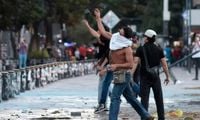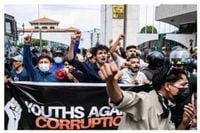In the wake of the dramatic Gen Z-led uprising that swept through Nepal in early September 2025, the nation finds itself at a crossroads—torn between restoring the battered remnants of its old political order and embracing the reinvention demanded by a new generation. The two-day youth-led protest did more than just topple the powerful Nepali Congress and Communist Party of Nepal (Unified Marxist-Leninist) coalition; it thrust Nepal into a full-blown constitutional crisis, with state institutions like Singha Durbar, the Parliament Building, the President’s Office, and the Supreme Court set ablaze in a matter of hours. For three tense days, from September 9 to 12, the country was effectively without a functioning government, its security apparatus in tatters.
Out of that chaos emerged Sushila Karki, a former Chief Justice, who was sworn in as Nepal’s new prime minister on September 12. The Karki administration’s rise marked a pivotal moment in the country’s political history, one that has drawn intense scrutiny from both domestic observers and the international community. According to The Wire, the youth uprising and subsequent transition have forced major powers like India, China, and the United States to recalibrate their engagement with Nepal, revealing as much about global geopolitics as about Nepal’s own internal struggles.
India, Nepal’s southern neighbor and long-time partner, was the first to respond to the escalating crisis. On September 9, as fires raged and government authority crumbled, Indian Prime Minister Narendra Modi issued a statement calling the violence “heart-wrenching” and urging Nepalis to maintain peace and order. That same day, India’s Cabinet Committee on Security convened to assess the potential spillover effects of Nepal’s unrest. Within days of Karki’s appointment, India’s Ministry of External Affairs welcomed the new government, expressing hope that her leadership would “help in fostering peace and stability” and pledging continued cooperation for the prosperity of both countries. Diplomatic engagement resumed swiftly, with new agreements signed on cross-border transmission lines, signaling a return to normalcy in bilateral relations.
The United States took a more measured approach. On September 14, the U.S. Embassy in Kathmandu released a statement welcoming the restoration of calm and commending President Ram Chandra Paudel and youth leaders for their “commitment to a democratic solution.” The U.S. also acknowledged the Nepal Army and Chief of Army Staff General Ashok Raj Sigdel for their “vital role” in facilitating a peaceful transition. U.S. Ambassador Dean Thompson met with Prime Minister Karki on September 18 to reaffirm America’s support for Nepal’s “peaceful, democratic path forward.” Secretary of State Marco Rubio, in a Constitution Day message on September 20, emphasized Washington’s backing for the Nepali people’s aspirations for transparent, constitutional governance as elections loom on the horizon.
China, by contrast, responded with notable restraint. Its foreign ministry waited until September 14 to offer brief congratulations to Karki, underscoring Beijing’s respect for “the development path chosen independently by the people of Nepal.” Unlike in previous transitions, neither China’s president nor prime minister sent formal messages—a sign, according to The Wire, of Beijing’s unease. That discomfort was heightened by the unusual move of the Dalai Lama sending a congratulatory message to Karki, and by media reports of alleged Tibetan group involvement in the protests. These developments prompted Nepal’s government to reaffirm its commitment to the One China policy, assuaging Beijing’s security concerns but highlighting the complex geopolitical balancing act facing the new administration.
Amid the international maneuvering, former Prime Minister K.P. Sharma Oli cast a long shadow, repeatedly alleging an “external hand” in the September 8–9 events and framing the turmoil as a calculated effort to destabilize Nepal’s political system and undermine national sovereignty. While other parties refrained from such claims, Oli’s warnings have kept suspicions of foreign interference alive in the political discourse.
The United Nations and key development partners—including the UK, Japan, the European Union, and others—welcomed Karki’s appointment and maintained their assistance, signaling a broad international consensus in favor of a return to democratic norms. On October 17, Karki convened a diplomatic briefing in Kathmandu, outlining her government’s priorities: controlling corruption, preparing for elections, and managing post-crisis economic recovery. She reiterated Nepal’s commitment to the Charter of the United Nations, non-alignment, Panchsheel principles, and international law—core tenets of the nation’s foreign policy.
Yet, for all the talk of stability and reform, Nepal’s political scene remains fraught with tension. The Karki government’s controversial decision to recall ambassadors from 11 countries, including China, the UK, and the U.S.—in defiance of a Supreme Court order—sparked diplomatic friction. The administration argued that ambassadors appointed by the previous regime might conspire to undermine the new government, but critics warned that leaving key embassies vacant would hamper Nepal’s outreach for vital election and reconstruction support.
Internally, the Gen Z uprising has thrown a harsh spotlight on the failings of Nepal’s political institutions. As Republica reports, youth frustration has been fueled by repeated cycles of instability: since the 2015 Constitution, Nepal has cycled through fifteen prime ministers, none completing their tenure. Institutional reform has remained elusive, and youth unemployment now hovers above 20 percent. The Proportional Representation system, once designed to foster inclusion, has been co-opted by party elites to perpetuate their own dominance. The judiciary faces public skepticism amid allegations of favoritism, while law enforcement remains politicized and inconsistent, as evidenced by the high-profile case of Rabi Lamichhane.
“If you keep doing what you have been doing, you will keep getting what you have been getting,” wrote one analyst in Republica, capturing the mood of a generation disillusioned by the old order. The author argues that the question is not about restoring what failed, but about reimagining leadership capable of inspiring trust, integrity, and transformation. “Restoration preserves the old; reinvention creates the new. Choosing the latter can help avoid repeated disasters.”
Despite the magnitude of change and the clear call for reinvention, Nepal’s major parties remain focused on preserving their old structures, deaf to the demands of the nation’s youth. The closed culture of party patronage has driven Gen Z to form alternative movements, while established parties resist opening their ranks to independent, capable leaders. The author points to the recent New York City mayoral election, where a young, foreign-born citizen from a minority community, Zohran Mamdani, was elected on a progressive platform, as an example of political reinvention that Nepal’s parties would do well to emulate.
Beyond politics, the crisis has exposed the need for broader societal reinvention. Sensationalist media and misinformation have deepened divisions, and segments of civil society have amplified destructive narratives. The author calls for accountability not just from leaders and institutions, but from all who enable toxicity in Nepal’s public life. “History reminds us that progress has never emerged from comfort. Every great leap in science, democracy, or human rights was led by those who refused to accept that ‘the way things are’ must remain so.”
As Nepal looks ahead to planned elections on March 5, 2026, the stakes could not be higher. The Karki administration faces the daunting task of securing international support, managing reconstruction, and—most importantly—restoring the trust of a restless, globally connected generation. The choice, as the author puts it, is simple yet profound: will Nepal restore what is broken, or reinvent what has already failed? The answer will shape the nation’s future for years to come.





